What’s it like to teach the Core?
Eleven faculty members tell us it’s inspiring, intense and exhilarating.
Columbia College | Columbia University in the City of New York
This website uses cookies as well as similar tools and technologies to understand visitors’ experiences. By continuing to use this website, you consent to Columbia University’s usage of cookies and similar technologies, in accordance with the Columbia University Website Cookie Notice.
What’s it like to teach the Core?
Eleven faculty members tell us it’s inspiring, intense and exhilarating.
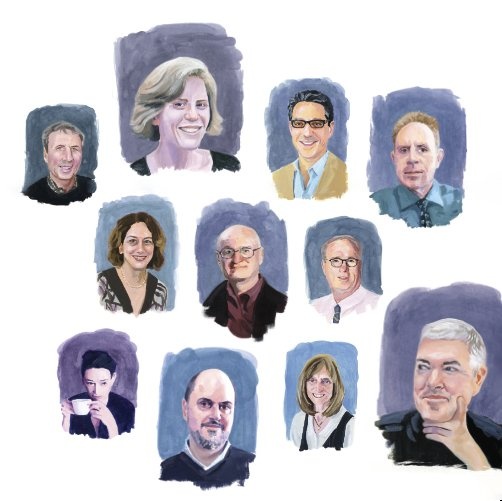
No celebration of the Core Centennial would be complete without the voices of those who teach the curriculum. In any given year, the classes are led by close to 200 instructors representing more than 20 departments. It’s a collective effort that, as one longtime professor put it, means that working at Columbia College is about something — that teaching the Core instills a sense of purpose, joins the instructors in a common cause and imparts to the entire College community a sense of tradition and shared intellectual history.
We asked 11 faculty members for their reflections and perspective on the Core. What was it like preparing to step outside of their specialties, and how has teaching the different courses shaped them as professors and scholars? What do they see as unique about the curriculum for students, and how is it different from the classes they elect to take? What meaningful or inspiring moments have stayed with them?
Though the professors were united in their belief in the Core, their words underscored the variety of insights that come from participating in this unique educational endeavor. And they affirmed that — for all the many times they’ve gathered at the seminar table — the experience is never the same twice.
— The Editors

Boynton started teaching in the Core shortly after she joined the Columbia faculty in 2000. Her research interests include liturgy and music in medieval Western monasticism.
“Preparing for Music Hum has continually led me to make connections between different periods of music history. Thinking about music in broader terms has given me new ideas about composition and performance, as well as insight into relationships between the arts and humanities.”
She thinks a unique essence of the Core is the opportunity for discussion-based focus on primary sources:
“Rather than approaching them through layers of commentary and interpretation, students address primary sources — texts, music and images — directly (some in translation, of course). The learning is collaborative; faculty and students create an intellectual community.”
In summer 2015, Boynton and Art Humanities professor Robert E. Harrist Jr. began teaching a combined Art Hum/Music Hum program at Reid Hall in Paris:
“Teaching the two courses in conjunction brings out the alignment of music and visual art. For example, Impressionism forms a useful background against which to consider the music of Debussy; the same is true for Picasso and Stravinsky. The juxtapositions bring out meaningful intersections that shaped how the arts were experienced historically.”
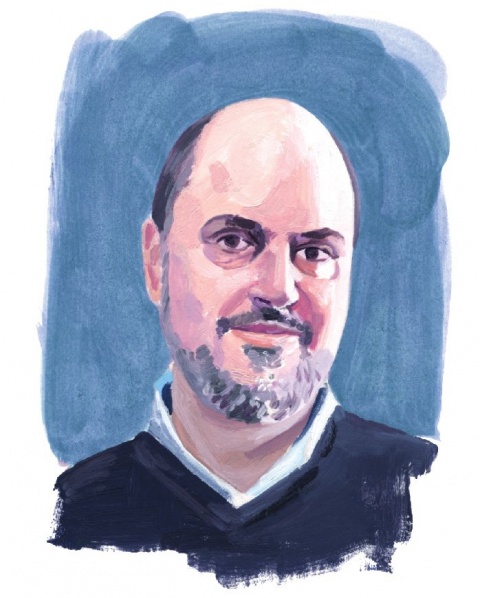
Dames joined the College faculty in 1998; his area of specialty is the history of the novel in Britain and Western Europe. He says teaching in the Core is “an experience that you just don’t get anywhere else.”
“My first semester of Lit Hum was intense, but weirdly triumphant, too, for surviving it. There’s almost nothing like it, when you bond with that first group, when you’re all doing it for the first time. … After a few years of doing it you realize there’s a kind of openness to that classroom that’s greater than when you’re teaching in your own discipline.”
Dames says “the immersiveness” is what’s most special about the Core for students:
“To be with the same 22 people for four hours a week all year long is unlike anything they would have here or anywhere else. It’s not stale familiarity, but productive familiarity, an intimacy. They have enough time to get used to you, to get frustrated with the limits of what the professor does, and to push at it a bit. If it works well, by the second half of the second semester you’re not running it in the same way anymore. That’s very much about the structure and not the content, and that to me is irreplaceable.”
And he thinks that humor in the classroom can be a productive mode of thinking:
“Finding something funny can really open texts up — and also make them stick. I have so many memories of levity, moments when the class really frees itself. It’s not a successful term without a few laugh-out-loud moments!”
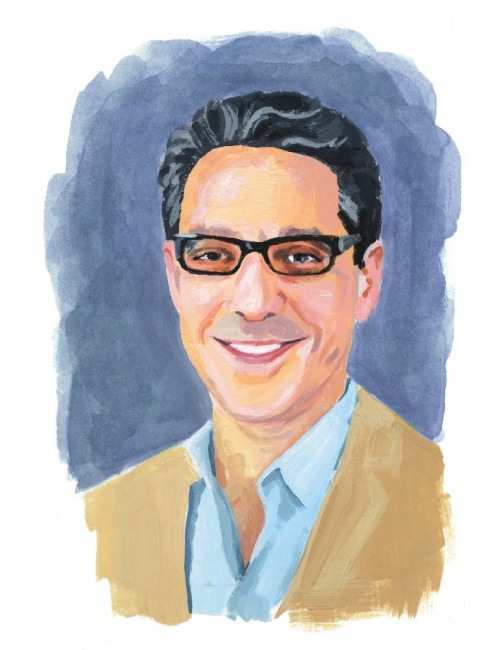
Elcott has chaired Art Hum since 2018, coming full circle from when he took the course in the first semester of his first year. He credits his own Art Hum professor, Stephen Murray (an expert on the Amiens Cathedral), with sparking his passion.
“It’s likely that even if your emphasis is 17th-century still life painting or Roman coins or 20th-century sculpture, you will inspire students to pursue the most extraordinary topics and ideas and experiences within and beyond the Art Humanities curriculum.”
Elcott tells graduate students who are preparing to be first-time preceptors that teaching the course involves a certain amount of letting go.
“It is both humbling, as it should be, and liberating, because no one expects you to be an expert. Sometimes undergraduates mistakenly think that you can possibly know all of it, when of course you can’t.”
He says that Art Hum students, similarly, need to experience the class as a safe space to engage with and question art, and that the aim of the course is not mastery of material, but rather openings onto new worlds:
“The number 1 goal is to spark the passion, provide the critical tools and transmit enough of the knowledge necessary to fuel a lifelong engagement with art.”
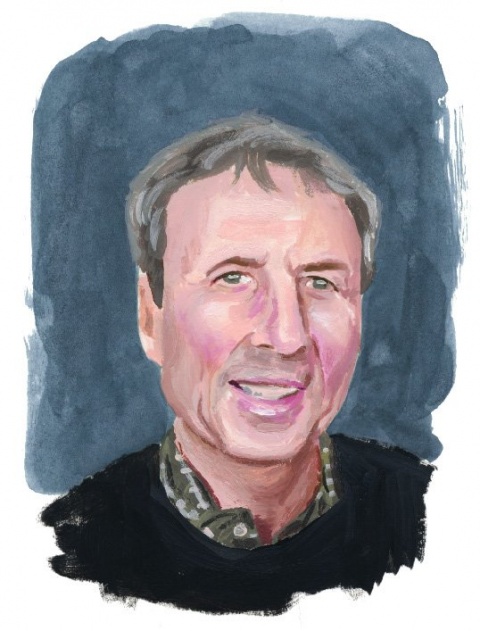
Frisch is a specialist in Austro-German composers of the 19th and 20th centuries. He says that Music Hum is an opportunity to guide students’ hearing and thinking toward a deeper understanding of music, and to expand their experience of something that’s already very present for them:
“For almost all our students, music is a basic, essential part of their lives. But what we study in Music Hum is mostly not what they listen to regularly, so as instructors, we can build on what they already love in order to get them to appreciate Western classical music.”
Having taught the course more than 30 times, Frisch says that he’s learned it’s better to study fewer works in more detail; he might spend two or three full classes on an opera like Don Giovanni or a work like Beethoven’s Symphony No. 5:
“Learning to listen, or to watch, in the case of opera, takes time, and this process takes place best in real time. I’ve found that going through works like these in some detail — stopping the recording or video, discussing, demonstrating a detail at the piano — really helps the students absorb and internalize the material.”
Some of Frisch’s most rewarding teaching moments have come from having guest musicians perform in class.
“Last semester we had four different live performances in my section, including a pianist from the Columbia-Juilliard program, Forrest Eimold [’22], who played Beethoven and Chopin. It was wonderful to see the students’ faces as they watched his intense virtuoso playing and his focused concentration. They could see how the music of the composers we were studying comes alive in a performance.”
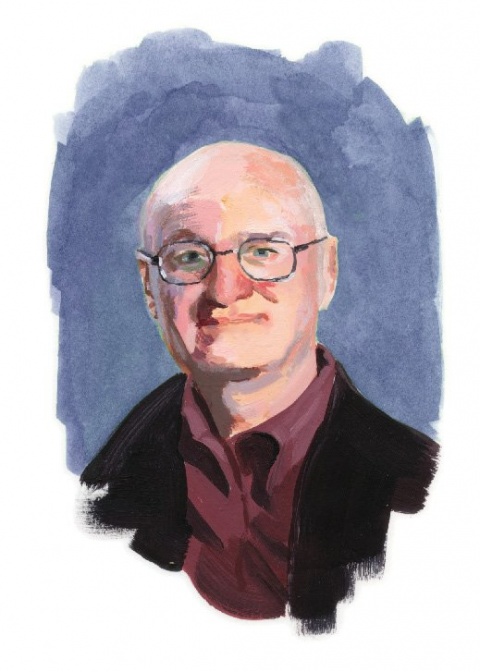
Though Harrist’s field of expertise is the art of China, he originally set out to be a Matisse expert. His knowledge of Western art was invaluable preparation for Art Hum, which he began teaching in 2000.
“I didn’t really start to look at art carefully until I started teaching Art Hum. There’s something about the intensity of the Core classes and, in the case of Art Hum, the intensity of looking required to make it work, that helped me get to a different level in my own engagement with the visual arts.”
He believes the goal of Art Hum is “to nurture the ability to derive visual pleasure from paying attention to the world”:
“If you learn to pay attention to the pattern of ornament on a doorway, and enjoy doing so, you might start paying attention to all sorts of things. I think that given the state of the world and the country at the moment, paying attention is more important than ever.”
Harrist thinks the art and architecture on campus is a resource that greatly enriches the teaching of Art Hum:
“When you walk out of Schermerhorn, the buildings you see are in one way or another connected to monuments we study. Being able to go straight from the classroom and out the door to show students something — whether it’s the fluting of a column or a Corinthian capital — is a huge pedagogical advantage.”
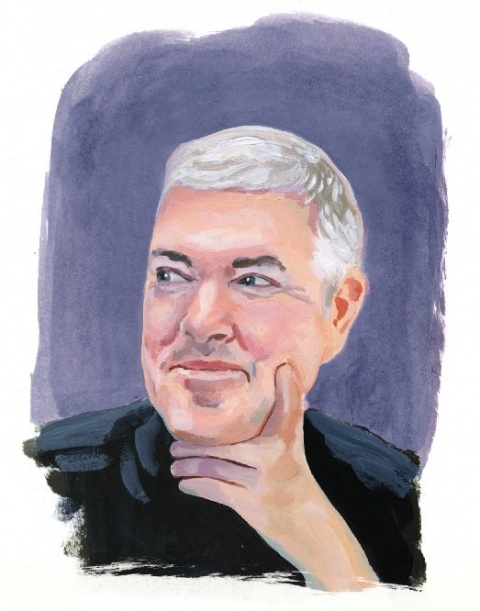
McKelway earned his Ph.D. from Columbia in 1999; he returned as a professor in 2007. He chaired Art Hum twice — from 2009 to 2011 and from 2016 to 2018.
“What I think is so distinctive about studying art history is it’s something that elicits an emotional reaction … it goes to the mind through the eyes but in a different, more visceral way than we experience when reading a text. Art is a way to communicate that existed before written language, after all.”
He started teaching the Core Curriculum in Spring 2008. Then-chair Robert Harrist told him, “Art Hum is the glue that holds the department together,” but as a Japanologist with no experience teaching the history of Western art, McKelway at first found the prospect “really daunting”:
“I had a sense of awed panic. I felt prepared as an art historian, but what I hadn’t quite understood is that I could take the language I was using to talk about cultures I was more familiar with and apply it to Western art. What teaching outside your comfort zone does is make you think more broadly about big questions — about the nature of art, and what ‘art’ is.
McKelway says he appreciates how “a perfect cross-section” of students who might not otherwise interact are represented in his Art Hum classes, and that the Core provides them with a new way to communicate:
“It creates a common conversation — not only within a single class, but across the entire curriculum. It’s not so much a Core body of knowledge, but a mind that has become used to exercising and thinking about big, sticky, tough questions.”
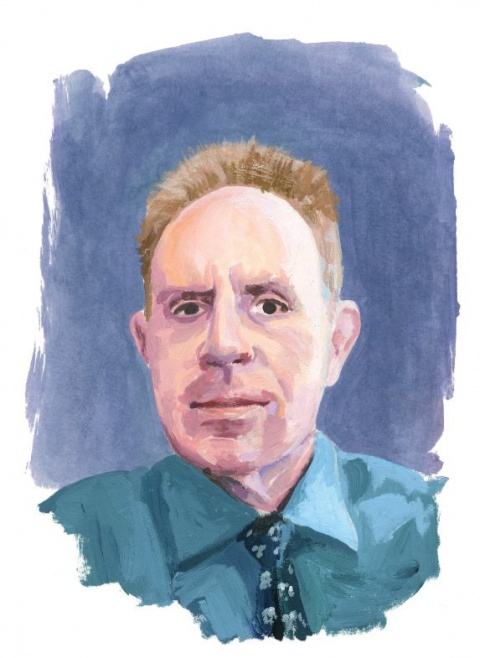
Mendelson has been teaching at the College since 1981; his primary interest is 19th- and 20th-century literature.
“I like talking about great books, so I am delighted to teach in the Core. But after I did it for the first time I started rewriting the syllabus a bit, swapping in books that I thought made more sense as part of a coherent story. When the Core didn’t teach Euripides’s The Bacchae — which is to me the most disturbing play ever written — I put that in. I’ve replaced Crime and Punishment — which is a very great book! — with Notes from Underground.”
He says a theme of his teaching is the difference between a collective identity, like gender or race, and “being a person”:
“What I try to teach in Lit Hum is thinking for oneself. The inner life has no category, no ethnicity, no gender, no skin color. It’s not a product of compromises; it’s where you think what you want. I’ve swapped Pride and Prejudice for Frankenstein, a book that seems to me an ideal fit for the plot of the course, which is what it’s like to become an individual — what the price is as well as what the benefits are.”
Mendelson says one of his favorite moments is when he feels the students relax and “they stop being too shy to talk”:
“There’s always a moment toward the middle of the term when a few students who mistrusted me start trusting me. I think some are not used to being spoken to as individuals, rather than as category members. Our whole culture is determined to think of human beings as categories, and I get to see people become themselves.”
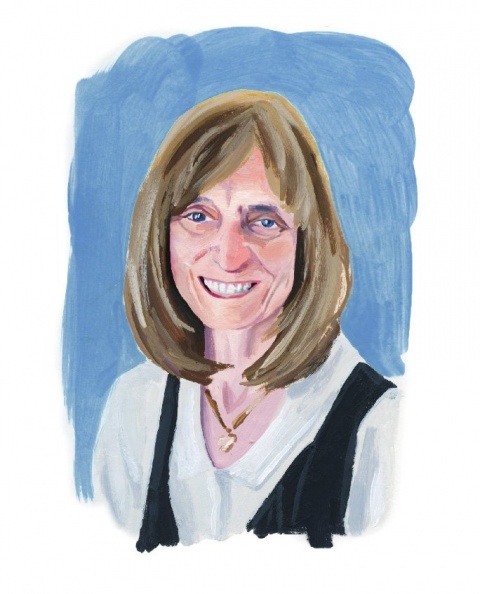
Popkin specializes in Chekhov, 19th- and 20th-century Russian prose, and literary theory, and has taught Lit Hum since 1986. She holds a reunion for each Lit Hum class toward the end of their senior year, and is continually moved by the camaraderie of the Core experience.
“The most stunning thing about this program is seeing every kid in Butler poring over The Iliad at the same time, or hearing them argue about the ending of Crime and Punishment in the elevator in Hamilton. That universal community of readers is so powerful.”
She thrives on small-group conversations:
“What I do best in the classroom has nothing to do with expertise; it has to do with making something happen right then and there in real time. It’s even more exciting to do that when you’re trying to puzzle your way through something strange and unfamiliar. And then you get to something and everyone gasps: that is the most thrilling thing in the world.”
She appreciates that the Lit Hum texts aren’t beyond critique by the students or faculty:
“You read against the grain a lot of the time; you don’t just worship what you’re teaching.”

Sisman currently chairs Music Hum and has taught at Columbia — and in the Core — since 1982. She loves that the course offers students opportunities to be profoundly moved, and thinks that “there’s a lot of human truth on offer” for students during their class trip to the Metropolitan Opera.
“After La Bohème last semester, I heard from both male and female students: ‘I knew what was going to happen, but I didn’t think I was going to cry at the end; I didn’t know how it was going to affect me.’”
She notes that students without musical backgrounds can be nervous at the start, but says in reality, the class explores topics and questions that are new for most everyone.
“There’s always the sense in Music Hum of, oh, somebody took piano lessons or somebody can read notation, somebody’s mother always took them to ballet. But I generally find that doesn’t make a difference. You can have eight years of piano lessons and not have any idea of what is making the music tick.”
Sisman recalls that preparing to teach Music Hum was initially “terrifying,” but says she took comfort in knowing the Core is intended as a place for experts to step outside their specialty and for amateurs to be learning together:
“Music Humanities is a way of thinking and talking about how the music lives in itself. How did people respond to it then, and how do we respond to it now; it’s not only what has it meant historically but why is it still being recorded or performed, and how does it speak to us today?”
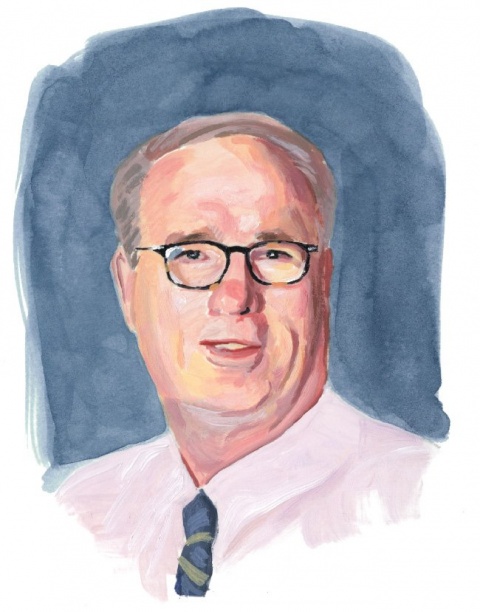
Stanislawski has taught in the Core for nearly 40 years, and chaired CC for four of them. A specialist in Jewish, European intellectual and Russian history, he says the Core is one of the main reasons he came to work at Columbia — and why he’s stayed.
“My view of CC is not that it’s a canon of books that students have to read. It’s really a debate about the fundamentals of life. Is there a god and if so, what does it mean for us? Have these students thought about what being a citizen means or should mean; what kind of political organization we should have? We have very smart students, but it’s rare that they will have thought about these things.
So here you’re introducing these questions to them.”
He is inspired by the graduate student preceptors who teach in the Core:
“It may sound corny, but in this time when the humanities are in such crisis and are shrinking, it’s uplifting to see these students who really are dedicated to studying and learning and teaching them.”
One of his proudest teaching moments occurred just last year:
“I had a student, a very smart student, but literally she had no idea how to express her own ideas. I had to sit down with her and say, ‘Give me an example of what you have an opinion about.’ She did, and I said, ‘Now tell me what you feel and think about that,’ and she told me. Now, I said, tell me what someone who was writing about it would say, and she tried that and it clicked — I could see it click — the difference between a personal view and an analysis. She had never done that before; she had only given back to professors what they wanted from her.”
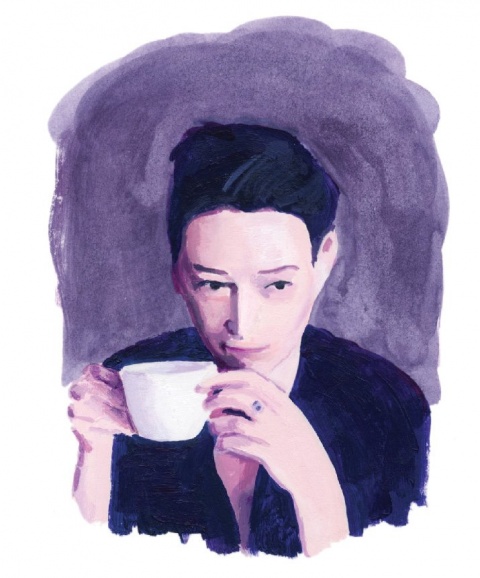
With its focus on big questions, Vogt says the Core plays to some of her central interests. A specialist in ancient philosophy, ethics and normative epistemology, she’s taught both CC and Lit Hum, and values having extended conversations with students with such different perspectives, experiences and goals.
“When I was a high school student in Germany, Kant was ‘in the milk you drink.’ This level of familiarity can mislead one into thinking that the ideas are highly plausible. But when you read Groundwork with students in CC, it’s a different experience — for most students, the steps in Kant’s argument aren’t intuitive at all. This is bound to lead to questions about pretty much every sentence. For me, teaching Kant in the U.S. — also in my ethics classes — has helped me see Kant with fresh eyes.”
She says Lit Hum is a special teaching experience — because it comes for most students in their first year, it sets the tone for their College journey:
“It’s as if the students get to discover two complex worlds at the same time: our campus and the universe of The Iliad and The Odyssey.”
She also appreciates having the chance to talk with students about one of her favorite authors:
“I love Homer — in another life, I could be a Homer scholar. The Core has given me the opportunity to sometimes switch into this role.”

Published three times a year by Columbia College for alumni, students, faculty, parents and friends.
Columbia Alumni Center
622 W. 113th St., MC 4530, 6th Fl.
New York, NY 10025
212-851-7852
cct@columbia.edu

Columbia Alumni Center
622 W. 113th St., MC 4530, 4th Fl.
New York, NY 10025
212-851-7488
ccalumni@columbia.edu